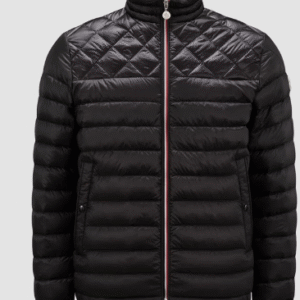In several manufacture machines, pillow block bearings are very much used and known as significant kinds that support revolving shafts and allow for smooth, competent motion giving no friction. They are strong, nonetheless they may still have several typical faults that can hurt equipment performance and cost a lot of money in lesser time. They must keep functioning, it’s vital to know what such issues may arise and we must know to fix them.
What Are The Four Types Of Pillow Block Bearings?
Ball Bearings: In the ball bearings, a ball is made in use that is basically used as a rolling object. At the time of the rotary applications, these ball bearings forge a motion that does not cause a high friction. You will observe an outer and inner ring in the bearings.
Spherical Roller Bearings: You may come across a needle roller while using a spherical roller bearing. The diameter may appear to be small as compared to the cylindrical roller bearings.
Plain Bearings: The plain bearings are primarily used in the linear applications. They are used to mitigate and lessen the friction. The users can also keep friction in check.
Hydrodynamic Bearings: In the hydrodynamic bearings, the fluid film is filled. The bearings rely on the air film. They help keep stationary and moving parts away. It is important to note that hydrodynamic pillow bearings are costly and complex as compared to the traditional rolling bearings. These bearings can bear heavy loads.
Use a pillow block bearing in places where residences are constructed. The users can make use of any of the above-mentioned four bearings as per their requirements.
1. Problems with alignment
Misalignment is one of the most common reasons why pillow block bearings don’t work well. This happens when the shaft and bearing housing are not exactly lined up. This may happen if the installation is done wrong, the mounting surfaces wear off, or the device expands as it becomes hot.
Misaligned bearing parts are loaded uneven, causing more vibration noise and wear. Neglecting this could lead to bearing shaft or other equipment damage. For any misalignment grab dial indicators or laser stuff to get it all lined up right when installing. Make inspections a part of how you maintain things. Shim adjustments or flexible couplings may be required in certain circumstances to make up for shaft deviations that can’t be avoided.
2. Failures in lubrication
Pillow block bearings need lubrication to keep them from becoming too hot and too much friction. It is bad to not lubricate enough or too much. Not enough lubrication produces dry friction, overheating, and surface fatigue, which eventually leads to bearing failure. Putting too much oil on may harm seals and attract dust and other particles, making the issue worse.
All you can do is to handle it with proper kind and the parts of lubrication at the proper times, based on how the machine is used. For instance, lubricants that functions below hugs temperatures or having many chemicals are required in such situations. Automated lubrication systems could assure grease or oil gets to where it has to go on time. To stop such frequent errors and keep bearings strong, maintenance specialists should know the techniques to lubricate them.
3. Pollution
When dirt dust or moisture gets in bearing housing things don’t work great it won’t last so long. Contaminants can help abrasive wear corrosion and lubricant breakdown which worsens friction plus vibration. You must seal it with care. Replace or add new one when needed especially in harsh industrial situations.
4. Too much weight
Pillow block bearings are designed to withstand certain restrictions on radial and axial loads. Overloading happens when the forces given to a machine are more than the design ratings. This might happen because the equipment was poorly designed, it gets rapid shock loads, or it works in ways that aren’t predicted.
When bearings are overloaded, their rolling elements or races may become damaged inside, such as by pitting, breaking, or changing shape. To avoid overloading, make sure you know exactly how much load the application needs and use bearings that can handle that load. Use shock-absorbing mounts or vibration dampeners to prevent transient shocks from happening. Regular checks may find early indicators of damage from too much weight, so repairs or modifications can be made on time.
5. Wrong fit and mounting
For pillow block bearings to work well, they must be mounted correctly. When the bearing is not correctly installed on the shaft, either too tight or too loose, problems arise. A tight fit makes the inside space smaller, which causes friction and heat. A loose fit lets the bearing move on the shaft, which causes noise and uneven wear.
Use precise equipment to measure dimensions, and follow the manufacturer’s instructions for mounting bearings, such as using a press or heating the bearing to make it bigger when necessary. Check that the tolerances for the shaft and bore meet the manufacturer’s requirements. Don’t rush through installations, and check again after mounting, especially for tapered bore or adapter sleeve bearings. Proper installation makes bearings last longer and decreases the chance of them failing early.
In conclusion
Pillow block bearings are simple they seem but reliable operation’s critical for machine performance. Misalignment lubrication issues too much junk excessive loads and wrong mounting can be likely avoidable if you maintain things install correctly and pick right bearing kinds of thing. Knowing issues plus fixes enables plant engineers and maintenance teams to cut downtime improve equipment life and boost pillow block bearing efficiency.
This realistic method will make sure that pillow block bearings keep supporting India’s growing industrial automation environment in a strong and reliable way.






